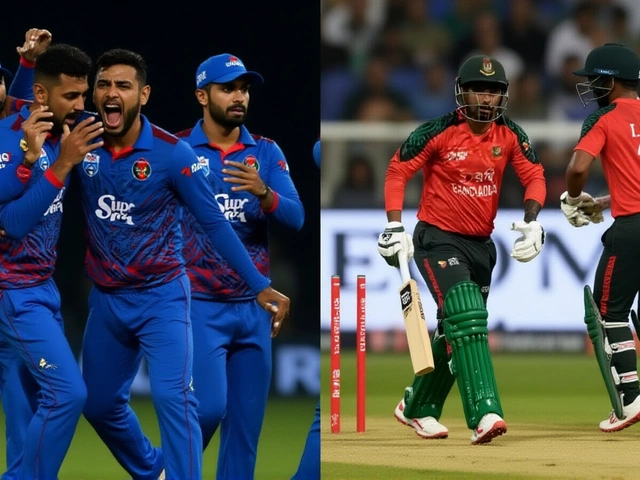Indian Food: Simple Recipes, Essential Spices, and Cultural Stories
Indian food is a mix of bold flavors, colorful spices, and stories that stretch across the subcontinent. Whether you’re a beginner or an experienced cook, you can bring authentic taste to your kitchen without hunting for rare ingredients. Below you’ll find easy recipes, spice basics, and quick tips that let you enjoy Indian cooking today.
Everyday Indian Recipes You Can Cook Today
Start with a classic dal – split red lentils simmered with turmeric, cumin, and a pinch of salt. Rinse the lentils, boil for 15 minutes, then add a tempering of mustard seeds, garlic, and chopped chilies in hot oil. Serve with rice or flatbread. For a quick veggie dish, try aloo bhujia: dice potatoes, toss with oil, cumin, and coriander powder, then roast until crisp. Both recipes take under 30 minutes and need only pantry staples.
Understanding the Core Spices and How to Use Them
The backbone of Indian cooking is a handful of spices you can keep in any kitchen. Cumin adds earthiness, coriander brings citrus notes, and garam masala gives a warm finish. Toast whole spices in a dry pan for 1‑2 minutes before grinding to release aroma. When a recipe calls for “tempering,” heat oil, add whole spices, and let them sizzle – this step builds flavor for the whole dish.
Having a ready‑made spice blend saves time. A basic garam masala mix of cinnamon, cloves, cardamom, pepper, and nutmeg works for most curries. Store it in an airtight jar away from light, and it stays fresh for months. If you’re unsure about measurements, start with a teaspoon of the blend per cup of sauce and adjust to taste.
Street‑food lovers will appreciate a simple chaat recipe. Mix boiled chickpeas, chopped tomatoes, onions, and fresh coriander. Drizzle tamarind chutney, sprinkle powdered chili and roasted cumin, then finish with a squeeze of lemon. The balance of sweet, sour, and spicy captures the excitement of Indian markets in a bowl.
India’s regions each have a distinct palate. The south favors coconut, mustard seeds, and rice, while the north leans on wheat, dairy, and richer gravies. When trying a new recipe, look for regional cues – a touch of curry leaves points to the south, whereas a dollop of ghee signals a northern dish.
Health benefits often come from the spices themselves. Turmeric’s curcumin has anti‑inflammatory properties, and ginger aids digestion. Adding a pinch of these spices to everyday meals can boost nutrition without changing the flavor profile dramatically.
If you’re short on time, use ready‑made paste or masala powders. A tablespoon of ginger‑garlic paste saves chopping, and a spoonful of tikka masala sauce can turn a simple chicken breast into a restaurant‑style dish. Just remember to check the label for added sugars or preservatives if you prefer a cleaner option.
Finding ingredients is easier than you think. Most grocery stores carry common spices, and Indian markets offer fresh herbs, ghee, and paneer. When you’re abroad, online stores often ship small spice packets, so you never have to compromise on flavor.
Finally, don’t be afraid to experiment. Indian cooking thrives on personal touches – add a handful of peas to a potato curry, or swap cauliflower for broccoli in a mixed vegetable stir‑fry. The more you play with flavors, the more confident you’ll become in the kitchen.
With these basics, you can explore the vast world of Indian food without feeling overwhelmed. Grab a pan, a few spices, and start cooking – the delicious results will speak for themselves.
The US often gets Indian food wrong due to cultural misunderstandings. Dishes like tikka masala, which is a British invention, are mistakenly perceived as Indian. Indian cuisine is not just a single type of food but rather a vast array of regional dishes and flavors. Each region has its own unique set of ingredients, spices, and flavors that make up its cuisine. Furthermore, Indian food can range from the mild and subtle to the fiery and intense. To truly appreciate and understand Indian food, one must take the time to explore all its nuances and complexities. It is important to appreciate the culture that has shaped the cuisine and understand the differences between regions.
This article looks at the common perception that Indian food is always spicy, and whether this is true. It examines the variety of Indian cuisine, and the regional differences in spice levels. It also examines the role of chilli peppers in Indian cooking, and how this contributes to the perception of spice. It concludes that Indian food is not always spicy, and that there are a variety of regional and cultural factors that can influence the flavors of Indian cuisine.




